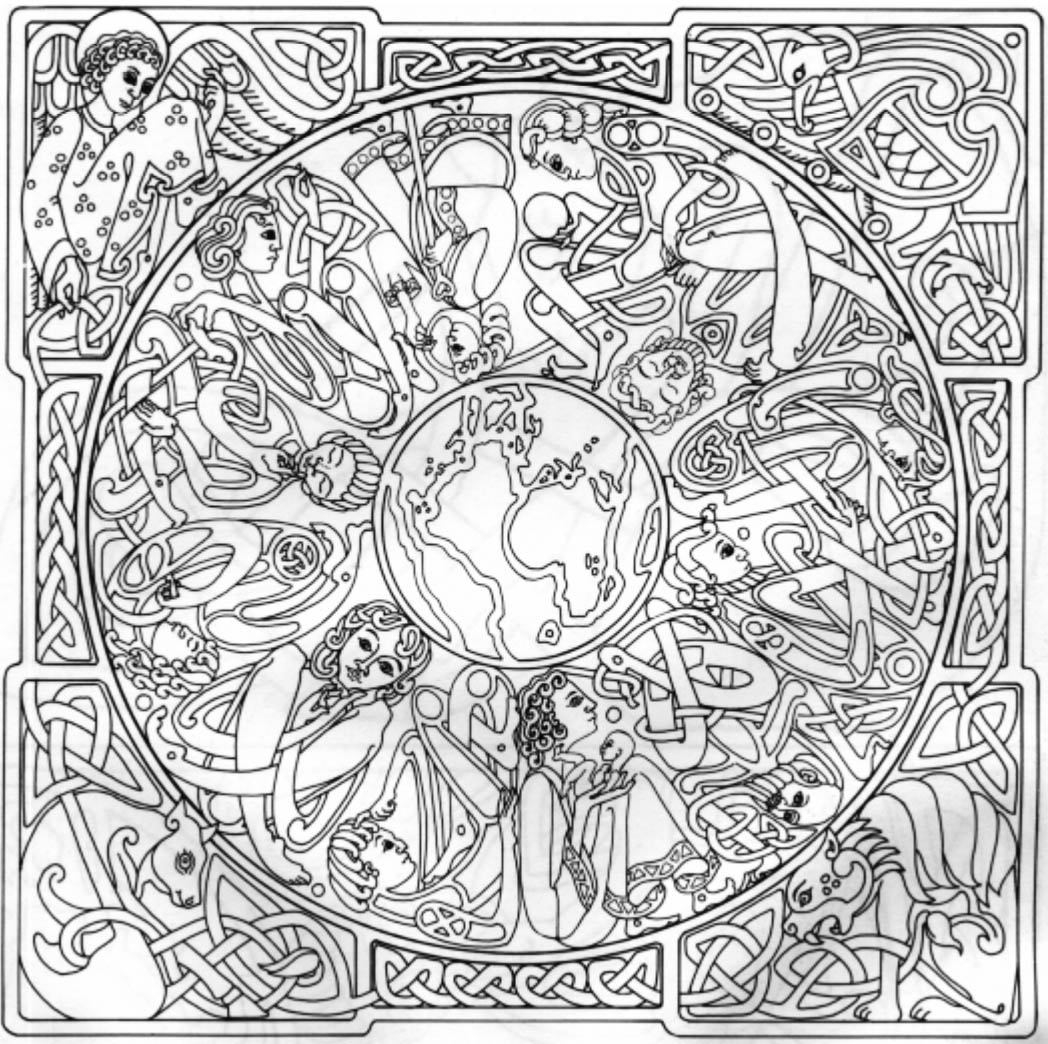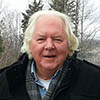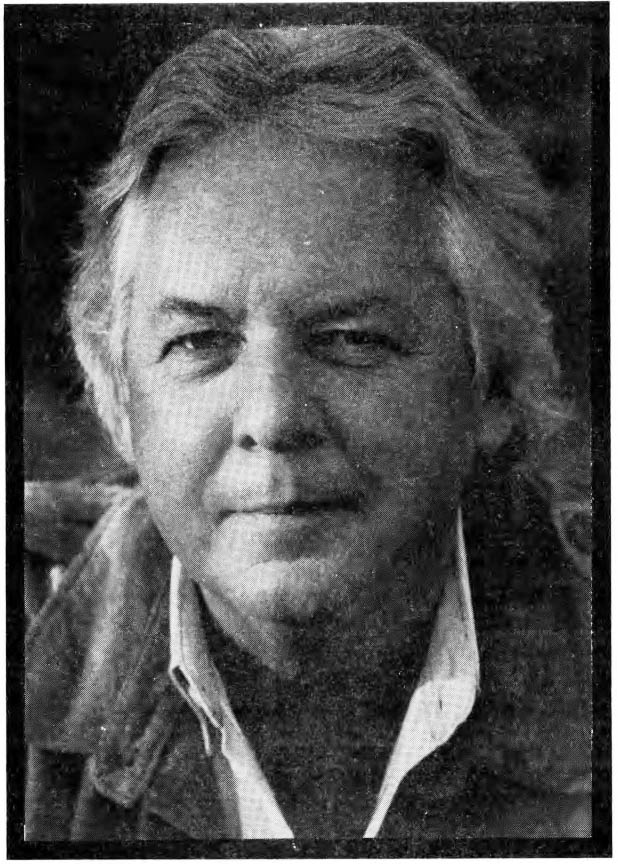
If we could fold time, travel forward a century or two and then look backward, I believe we would find abundant confirmation that the rise of the dreamwork movement is one of the most important developments of the modern era.
In my brighter vision of what is to come, our society will be guided by dream helpers who are dreaming with and for the Earth itself. Their constant work is to help those around them to use dreams for guidance and healing, as a direct line to the God/Goddess we can talk to. Dream helpers play a central role in health care; now it is recognized that dreams diagnose problems before they manifest and that dream imagery and conscious interactive dreaming offer vital tools for healing. Dreamworkers help the dying to prepare for the afterlife journey by following the path of the soul in dreams; in this way they learn to go through the swing-door of death with confidence and grace. In the workplace, the day begins with dream leaders helping colleagues to share their dreams and to grow community visions. In our schools, our children become storytellers, communicators and creators by sharing and giving creative expression to dreams, and get credits for doing this.
In this happy future, dream guides are valued because they midwife creativity and healing. Above all because it is understood that they help us to connect with soul and recognize that this is vital to our survival as an evolving species in balance with our environment. Dream travelers are respected because it is now common knowledge that they have direct access to the flux of consciousness that particle physicists found to lie at the heart of matter—more specifically, to the ‘hidden’ six or seven dimensions of the multiverse identified by superstring theory, even before the end of the 20th century.
In my darker vision of what is to come, I see dream travelers and dreamworkers helping to rebuild our world after a catastrophe. In spontaneous dreams and visions over many years, I have found myself traveling into a possible future in which an order of priestess-scientists are trying to repair the havoc caused by the ignorance and violence of men of power who did not listen to dreams. The dream priestesses of the future have perfected the arts of community dreaming and group dream travel, and have been able to access immense sources of energy and knowledge at the heart of subatomic space. Dreaming, they reach out to educate and inspire those who will help humanity to find its way.
In a recent dream, I found myself voyaging into the world of the Kogi, a dreaming people who live on a sacred mountain in Colombia and succeeded in isolating themselves from the outside world until the 1980s. I made my dream journey to the Kogi at the invitation of a friend who had spent many months with them and had brought me a personal message from one of their shamanpriests. I met a being who showed himself first as a giant bird, then as a man in a conical hat. I saw vivid scenes of his people on the mountain they regard as the heart of the world. Then he opened a vision gate for me, inside the dream. To my surprise, I found myself looking at seemingly ordinary, middleclass Americans going about their daily business. I was catapulted into the mind of one of them and I was horrified. Here was a decent family man, trying to do his best, in utter ignorance of what is happening to the forests and the seas, of the psychic forces that breed hatred and violence, and of the nature of the soul. In that moment, I understood the immense cost of our Western ignorance, from the point of view of an indigenous dreaming people. And I knew that the return of the dreaming ways is the antidote.
Dreamworkers may follow many different approaches to dreams, but by my observation they agree on the following:
Dreams are important!
The only ‘expert’ on a dream is the dreamer.
Dreams connect us to sources of guidance that are wiser than the everyday mind.
Dreamers should help each other, wherever possible, to open a safe and sacred space where dreams can be shared and the dreamer can be offered non-intrusive feedback and guided to take appropriate action to honor the dream.
Dreaming is for the community as well as the individual.
We need many more dream helpers from all walks of life, contributing a panoply of rich and varied perspectives, personalities and life experiences, to bring the gifts of dreaming to people where they live.
The next step, it seems to me, is very simple, and hugely important. If we are going to become a dreaming society again, we need ways to make it easy and safe — and fun — to share dreams with other people anywhere, anytime. Our first service to others, as dream helpers, is to confirm and validate other people’s dream experiences, and to encourage them to claim the full power and energy of their dreams. And we need to be able to do this in the thick of the hurry-sickness and manifold distractions of contemporary life.
Lightning Dreamwork
Over many years of teaching and practice, I have evolved the simple and powerful method for everyday dream sharing that I call Lightning Dreamwork. Like lightning, it is very fast and it focuses extraordinary energy. In the workshops, we allow just 8 minutes for the whole process to be applied to a single dream. This does not mean that we can’t spend an hour — or a day — with a dream when we have time and the dream invites that depth of exploration. It does mean that when we use this process we always have time to share our dreams, no matter how busy our lives may be.
The Lightning Dreamwork process makes it possible to share dreams and receive helpful feedback just about anywhere: in the office, the E.R., at the family breakfast table or in the checkout line at the supermarket. The guidelines make it easy to share dreams with complete strangers or with intimate friends and family.
This process incorporates the ‘if-it-were-my-dream’ protocol for commenting on someone else’s dream developed by Montague Ullman, which has been a tremendous gift to dreamworkers all over the map.
There are four key steps in the Lightning Dreamwork process. I have written the instructions as if you are working one-on-one with the dream. In a dream circle, one member would play ‘lead partner’ in guiding the process, with the others contributing their suggestions and associations in the ‘if-it-were-my-dream’ phase.
Step One: Telling the Dream as a Story with a Title
The dreamer tells the dream as simply and clearly as possible. The dreamer should always be encouraged to leave out his/her autobiography, and tell the dream as a story, complete in itself. When we do this, we claim our power as storytellers and communicators. We also avoid the appearance of giving a license to others to probe into our personal lives, which must never be permitted in dream sharing. The dreamer should be encouraged to give the dream a title. It’s amazing how the deeper meaning and shape of dream experiences jump into high relief when we do this.
Step Two: The Partner Asks The 3 Vital Questions
If the dreamer has forgotten to give the dream a title, the partner should ask him/her to make one up. The next step is for the partner to ask three key questions:
Question 1: How did you feel when you woke up?
The dreamer’s first emotional reactions to the dream are vital guidance on the basic quality of the dream and its relative urgency.
Question 2: Reality check
The reality-check question is designed to establish whether the dream reflects situations in waking life, including things that might manifest in the future. Dreams often contain advisories about the possible future, and it is important not to miss these messages. By running a reality check, we help to clarify whether a dream is primarily (a) literal (b) symbolic or (c) an experience in a separate reality. In practice, the dreamer may need to ask several specific reality check questions focusing on specific elements in the dream. Here are a couple of broadbrush reality-check questions that can be applied to just about any dream: - Do you recognize any of the people or elements in the dream in waking life? - Could any of the events in this dream possibly happen in the future?
Question 3: What would you like to know about this dream?
This simple question to the dreamer provides a clear focus for the next step.
Step Three: Playing the ‘If it were My Dream’ Game
The partner tells the dreamer, ‘If it were my dream, I would think about such-and-such,’ The partner is now free to bring in any associations, feelings or memories the dream arouses, including dreams of their own that may contain similar themes. Often we understand other people’s dreams best when we can relate them to our own dream experiences.
It is very rewarding to receive a totally different perspective on a dream, so sharing in this way with strangers can be amazingly rich, as long as the rules of the game are respected. One of those ironclad rules is that we never presume to tell someone else what a dream means for them; we say only what it would mean for us, if it were our dream.
Step Four: Taking Action to Honor the Dream
Finally the partner says to the dreamer, “How are you going to honor this dream?”... or “How are you going to act on the guidance of this dream?” Dreams require action! If we do not do something with our dreams in waking life, we miss out on the magic. Real magic consists of bringing something through from a deeper reality into our physical lives, which is why active dreaming is a way of natural magic ñ but only if we take the necessary action to bring the magic through. Keeping a dream journal and sharing dreams on a regular basis are important ways of honoring dreams and the powers that speak through dreams. But we need to do more.
Turn a dream into a bumper sticker. This is always helpful. When we write a personal motto from a dream, we not only distil its teaching; we begin to bring its energy through. Create from a dream: turn the dream into a story or poem. Draw from it, paint from it, turn it into a comic strip take a physical action to celebrate an element in the dream, such as wearing the color that was featured in the dream, traveling to a place from the dream, making a phone call to an old friend who showed up in the dream use an object or create a dream talisman to hold the energy of the dream: A stone or crystal may be a good place to hold the energy of a dream, and return to it. Perform the dream through spontaneous dance or theatre use the dream as a travel advisory: If the dream appears to contain guidance on a future situation, carry it with you as a personal travel advisory. Go back into the dream to clarify details, dialogue with a dream character, explore the larger reality and have marvelous fun! In my workshops, we practice dream re-entry with the aid of shamanic drumming and enter each other’s dreamspace (with permission!) as trackers, to support the dreamer’s journey and to bring through additional guidance. Share the dream with someone who may need the information.
To the Place of the Heart
Sharing dreams in this way opens paths to limitless adventure and healing. Once we have mastered the Lightning Dreamwork process, we can play the role of dream helpers and dream ambassadors (quite literally) on any street corner.
We soon find that dreams bring us, and can bring our communities, back to the place of the heart. When I was teaching in California in October 2002, I found myself in a dream that made this very clear:
Mountain Lion Pulls Me Up to the Place of the Heart
I am climbing a steep cliff, carrying a small white box. The cliff is hard to scale, but someone at the top lowers a beaded strap to me. When I grasp it, I am startled to see that the other end is held by a mountain lion. The mountain lion pulls me up, immensely higher than I had expected, until I am on a lofty peak with a commanding view over the coastline and nearby towns and forests. Now the lion directs me to open the box, and I take out a beating red heart. When I place it on a boulder at the summit, the heart beats steadily and powerfully. I know that the heartbeat is reaching people across a great distance. I feel the heartbeat shepherding them towards healing rhythms in their lives, and recalling them to the wisdom of the heart.
I shared this dream with a circle I was leading. We did more than discuss it. We agreed to travel inside it, in a conscious group journey assisted by shamanic drumming. We climbed the mountain to receive healing and guidance in the realm of the animal guardians and the place of the heart. The heart center is where we find courage, and reconnect with what truly matters. Our role, as dream helpers, is to encourage each other to go there, and move beyond our conflict and confusion to the heart of the world.










